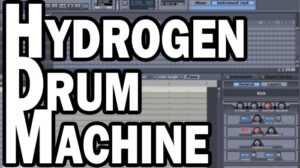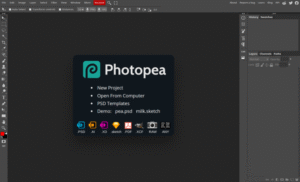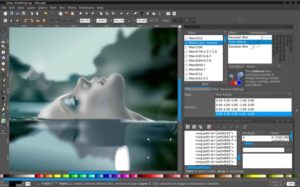Recording Instruments At Home Using Free Software
Recording instruments at home using free software opens a world of creative possibilities for musicians of all levels. From basic setups to advanced configurations, this guide explores the tools and techniques to capture high-quality audio recordings in your own space. We’ll delve into the advantages and disadvantages of home recording compared to professional studios, examine various free software options, and detail the recording process from instrument selection to final output.
The journey from initial recording to polished final product will be carefully examined, covering all the crucial steps and tools involved. Whether you’re an experienced musician or a beginner, this guide provides a comprehensive overview of the process.
Introduction to Home Recording
Home recording, a practice once relegated to the realm of professional studios, has become increasingly accessible and popular. Its democratization is largely due to advancements in technology, particularly the development of powerful and affordable software and hardware. From rudimentary cassette recorders to today’s digital audio workstations (DAWs), the tools available for creating music at home have evolved dramatically, empowering individuals with previously unimaginable creative control.The process of recording music at home has evolved significantly, allowing for complex arrangements and high-quality production in personal environments.
The range of capabilities has broadened, from simple recording to sophisticated multi-track mixing and mastering. This evolution reflects a broader trend in music production, where accessibility and creative freedom have become paramount.
Home Recording Setups
Home recording setups vary greatly in complexity, reflecting different needs and budgets. A basic setup might include a microphone, audio interface, and recording software. Intermediate setups incorporate additional instruments, like MIDI keyboards or synthesizers, and more sophisticated mixing tools. Advanced setups may include professional-grade microphones, high-quality audio interfaces, and extensive software suites for complex audio editing.
Advantages and Disadvantages of Home Recording
Home recording offers several advantages over professional studios. The flexibility and cost-effectiveness of a home studio are significant, allowing musicians to work on their own schedule and without the constraints of studio time. Furthermore, the ability to experiment and iterate freely is invaluable for creative development.Conversely, professional studios provide access to specialized equipment and expertise, which can lead to higher-quality recordings.
A professional environment can be particularly advantageous for intricate mixes and mastering. The dedicated and well-maintained acoustics of a professional studio also enhance the recording process.
Recording Equipment for Different Genres
The specific equipment required for home recording varies based on the desired musical genre. For instance, a rock band might require multiple microphones for vocals and instruments, a powerful audio interface, and possibly specialized acoustic treatment. Electronic music producers, conversely, might prioritize MIDI keyboards, synthesizers, and sophisticated audio software. These differences highlight the adaptability of home recording technology.
- For acoustic music, such as folk or jazz, a high-quality microphone, a good acoustic treatment, and a decent interface are crucial. A dedicated acoustic room is often preferable, but a soundproofed room is not necessary.
- For electronic music production, MIDI keyboards, synthesizers, and a DAW with extensive sound design capabilities are essential. A good quality audio interface with multiple inputs is recommended for capturing external sounds.
- For pop music, which often involves multiple instruments and vocals, a good-quality microphone, a decent interface, and a good mixing console are usually sufficient. Acoustic treatment can also help improve the recording quality.
Recording Software Comparison
Different software options cater to diverse needs and budgets. Choosing the right software is crucial for achieving the desired results.
| Software | Features | Pros | Cons |
|---|---|---|---|
| Audacity | Free, open-source, cross-platform | Excellent for basic recording and editing tasks. Ideal for beginners and budget-conscious users. | Limited advanced features, might not be suitable for complex projects. |
| Cakewalk by BandLab | Affordable, user-friendly DAW | Good balance of features and ease of use. Suitable for various music genres. | May not have the same level of advanced features as professional-grade software. |
| Ableton Live | Known for its intuitive workflow and flexibility | Excellent for electronic music production and live performance. Offers extensive features for sound design. | Steeper learning curve compared to some other DAWs. |
| Pro Tools | Industry-standard DAW | High-quality audio processing and comprehensive features. Ideal for professional-level mixing and mastering. | High cost, extensive learning curve. |
Free Software Options for Home Recording
Home recording studios are becoming increasingly accessible, thanks to a wealth of free and open-source software. These tools offer comparable capabilities to their paid counterparts, allowing individuals to produce high-quality audio without substantial financial investment. This section details various free software options, outlining their features, functionalities, and potential applications in home recording.Free software empowers individuals with the ability to create professional-quality recordings, whether for personal use, music production, or podcasting.
The accessibility of these tools democratizes the creative process, fostering innovation and growth in the audio production community.
Available Free Audio Recording Software
Free audio recording software options are diverse, catering to various needs and skill levels. This selection allows users to choose tools best suited for their specific projects, from simple audio capture to complex mixing and mastering.
- Audacity: Audacity is a popular, cross-platform audio editor known for its versatility. It provides a comprehensive suite of tools for recording, editing, and mixing audio. Audacity supports a wide range of audio formats, making it suitable for diverse recording tasks. Its intuitive interface and extensive documentation make it a user-friendly option for both beginners and experienced users.
- LMMS (Linux Multimedia Studio): LMMS is a digital audio workstation (DAW) that provides a robust platform for music production. It offers features such as MIDI recording, synthesis, and sound design, making it ideal for composers and musicians. LMMS’s free nature makes it a cost-effective solution for creating and manipulating music. It is especially valuable for users who prefer a more comprehensive music creation environment.
- Cakewalk by BandLab: Cakewalk by BandLab, a free DAW, offers a powerful set of tools for recording, editing, mixing, and mastering audio. It features an intuitive interface and provides a comprehensive environment for musicians. Cakewalk by BandLab’s features are comparable to many paid DAWs, allowing users to produce professional-quality recordings within a free platform.
Comparison of Functionalities
The capabilities of these programs vary, affecting their suitability for different projects. A detailed comparison of functionalities can aid in selecting the optimal program for individual needs.
- Audio Editing: Audacity excels in audio editing tasks, offering features such as cutting, pasting, and applying effects. LMMS, while having audio editing capabilities, is primarily focused on music production, with its robust MIDI support. Cakewalk, similar to Audacity, offers advanced audio editing tools, suitable for intricate audio manipulations.
- Mixing and Mastering: Cakewalk by BandLab offers a complete mixing and mastering environment, allowing users to adjust levels, apply effects, and fine-tune their recordings. LMMS also supports mixing but is less comprehensive. Audacity is more suitable for basic mixing tasks.
Reputable Free Software Options
The following programs represent reputable free software options for home recording:
- Audacity
- LMMS
- Cakewalk by BandLab
Installation and Download
Installation procedures vary depending on the operating system. Instructions for each program can typically be found on their official websites. These websites often provide detailed guides for various operating systems (Windows, macOS, Linux).
Supported Audio Formats
The table below Artikels the supported audio formats for each free software option.
| Software | Supported Audio Formats (Import/Export) |
|---|---|
| Audacity | WAV, AIFF, MP3, Ogg Vorbis, FLAC, and more |
| LMMS | WAV, MP3, and other common formats |
| Cakewalk by BandLab | WAV, MP3, and other common formats |
Recording Instruments at Home
Home recording offers a versatile and cost-effective way to capture your musical ideas. With the right equipment and setup, you can record a wide range of instruments, from acoustic guitar to vocals and even piano, within the comfort of your own space. This section will delve into the practical aspects of recording various instruments, highlighting microphone choices, acoustic treatment, and space optimization techniques.Recording instruments at home presents unique challenges that require careful consideration of the recording environment.
Factors like room acoustics, microphone placement, and instrument setup all play crucial roles in achieving a high-quality recording. This guide will provide a detailed understanding of these factors to help you get the best possible results.
Common Instruments Suitable for Home Recording
A variety of instruments are well-suited for home recording. Acoustic guitar, vocals, and piano are popular choices due to their relatively straightforward recording needs compared to more complex instruments. Other instruments like drums or string instruments might require more advanced setups and techniques, but they can still be recorded at home with proper planning and equipment.
Microphone Types for Different Instruments
Choosing the right microphone is essential for capturing the desired sound of each instrument. Different microphone types are designed for specific frequencies and characteristics. For example, dynamic microphones are robust and handle loud sounds well, making them ideal for instruments like drums. Condenser microphones, on the other hand, are more sensitive and capture intricate details, perfect for acoustic instruments and vocals.
Acoustic Treatment in Home Recording, Recording instruments at home using free software
Room acoustics significantly impact the quality of recordings. Echoes, reverberation, and unwanted noises can degrade the sound. Proper acoustic treatment minimizes these issues by absorbing unwanted sound waves and improving the overall clarity and balance of the recording. Methods like using acoustic panels, bass traps, and strategically placed blankets or curtains are often employed to reduce unwanted reflections and improve the overall sound quality.
Optimizing Recording Space for Various Instruments
The placement of instruments and the arrangement of the recording space are crucial for achieving a good recording. For acoustic guitar recordings, positioning the instrument in a specific location relative to the microphone can enhance the sound quality. Vocals require a quiet and well-treated environment to minimize background noise. Piano recordings benefit from a balanced space with good acoustic treatment.
Placement of instruments, microphones, and the use of sound dampening materials are all key to optimal results.
Necessary Accessories for Each Instrument
- Acoustic Guitar: A dynamic or condenser microphone, pop filter (to prevent plosives), instrument stand, guitar pick (for acoustic), acoustic guitar tuner.
- Vocals: A condenser microphone, pop filter, microphone stand, headphones, and vocal recording software.
- Piano: A condenser microphone or a pair of dynamic microphones, pop filter, microphone stands, and a sturdy piano bench.
| Instrument | Microphone Type | Accessories |
|---|---|---|
| Acoustic Guitar | Dynamic or Condenser | Pop filter, instrument stand, guitar pick, tuner |
| Vocals | Condenser | Pop filter, stand, headphones, recording software |
| Piano | Condenser or Dynamic (Pair) | Pop filter, stands, bench |
Recording Techniques and Procedures
Capturing high-quality audio recordings at home requires attention to detail in every stage, from selecting the right equipment to implementing proper recording techniques. Understanding the nuances of microphone placement, instrument-specific approaches, and audio settings is crucial for achieving professional-sounding results. This section will Artikel essential techniques and procedures for recording various instruments effectively.Effective recording relies on careful planning and execution.
Each instrument presents unique acoustic characteristics, demanding specific recording strategies. The following sections will delve into these strategies and common pitfalls, providing a comprehensive guide for achieving high-quality recordings.
Basic Recording Techniques for Different Instruments
Various instruments have unique sonic characteristics that require tailored recording approaches. A piano, for example, benefits from a microphone positioned at a slightly elevated angle, aiming at the soundboard or a specific area of the strings, depending on the desired sound. Stringed instruments, such as guitars and violins, often require a close-miking technique to capture the delicate nuances of the instrument.
A cardioid microphone is often preferred for this purpose, positioned to capture the instrument’s sound directly without excessive ambient noise. For wind instruments, a combination of distance and microphone type is important, where the position of the microphone and the distance from the instrument significantly impact the sound captured. Drums and percussion instruments require careful consideration of the position of the microphones relative to the drum heads and cymbals.
Positioning microphones strategically in the recording space helps capture the full dynamic range and the distinctive sounds of each instrument.
Common Recording Mistakes and How to Avoid Them
Several common mistakes can negatively impact the quality of a recording. One prevalent issue is inadequate microphone placement, leading to unwanted sounds or a lack of clarity. Improper placement can result in harsh sounds, and in cases of instruments with strong sound frequencies, excessive noise, or a lack of the necessary nuances in the recording. Another pitfall is insufficient recording level control.
Recording too softly may lead to weak sounds, while recording too loudly can cause distortion or clipping, a severe sound distortion that often manifests as a harsh, unnatural sound. Using a digital audio workstation (DAW) for monitoring the recording level and adjusting the input gain as needed can avoid these issues. Improperly setting audio settings, such as sample rate or bit depth, can also negatively impact the overall quality of the recording.
A sample rate that is too low may lead to a loss of high-frequency information and a significant reduction in audio quality. In addition, using a low bit depth can result in audio that is less dynamic, with fewer gradations in sound and less detailed sounds.
Steps Involved in Recording a Basic Track
A successful recording session involves several well-defined steps. First, choose the appropriate recording environment, ensuring minimal background noise. This includes isolating the space from external sounds and vibrations to maintain the clarity of the recording. Second, calibrate your microphones and recording devices. This crucial step ensures that your recording equipment is functioning correctly and that your microphone sensitivity is properly adjusted.
Next, select the optimal microphone placement and technique for the instrument being recorded. This may involve experimenting with different microphone positions and distances to find the most suitable placement. Fourth, monitor the audio levels during the recording process. Use the DAW’s monitoring tools to ensure that the recording levels remain within the acceptable range, avoiding distortion and clipping. Finally, review and adjust the recording as needed.
A final review of the recording will allow you to identify any areas that require further adjustments.
Significance of Audio Settings
Audio settings like sample rate and bit depth significantly affect the quality of a recording. A higher sample rate, such as 44.1 kHz or 48 kHz, captures more detail, while a higher bit depth, such as 24-bit or 32-bit, provides more dynamic range and a wider range of sound intensities. The selection of sample rate and bit depth should align with the recording environment and equipment to prevent degradation of the audio quality.
The chosen settings must support the needs of the recording project.
Importance of Proper Microphone Placement and Technique
Microphone placement directly impacts the quality of the recording. The proximity of the microphone to the instrument significantly affects the sound captured. Close-miking captures detailed sounds, while far-miking captures a broader perspective of the sounds. Different microphone types, such as cardioid or omnidirectional microphones, offer varied directional sensitivity. Using the appropriate microphone type and adjusting its distance and angle to the instrument will produce the best quality recordings.
Understanding the sound characteristics of the instrument and the recording environment are essential for choosing the appropriate microphone and placement techniques.
Procedures for Capturing High-Quality Recordings
High-quality recordings require a methodical approach. First, optimize the recording environment to minimize external noise. Second, choose the appropriate microphones for the instruments being recorded. Third, meticulously place the microphones for optimal sound capture. Fourth, accurately monitor the recording levels to avoid distortion.
Finally, employ high-quality audio settings for the best possible results. These procedures ensure the captured audio is rich in detail and free from distortion, resulting in high-quality recordings.
Mixing and Mastering with Free Software
Mixing and mastering are crucial steps in the home recording process, transforming raw recordings into polished, professional-sounding tracks. This stage involves adjusting the levels, frequencies, and dynamics of the audio to achieve a balanced and pleasing listening experience. Free software offers powerful tools for accomplishing these tasks, allowing users to achieve high-quality results without incurring significant costs.Mixing is the process of combining multiple audio tracks into a cohesive whole.
Mastering, on the other hand, focuses on optimizing the final mix for a consistent loudness and overall quality across different playback systems. Both are essential for producing a finished product.
Fundamental Concepts of Mixing
Mixing involves manipulating various aspects of audio to achieve a desired sound. Crucially, it’s about creating a balanced and harmonious blend of individual instrument tracks, vocals, and other elements. Equalization (EQ), compression, and effects are key tools in the mixing process, allowing for nuanced adjustments to the audio’s characteristics.
Fundamental Concepts of Mastering
Mastering is the final stage of audio production, focusing on the overall sound of the final mix. It’s designed to optimize the mix for various playback systems, ensuring a consistent loudness and a professional listening experience. Mastering aims to improve the mix’s loudness, clarity, and overall presence. This stage often includes adjustments to the overall volume, frequency response, and dynamic range.
EQ in Mixing and Mastering
Equalization (EQ) is a fundamental tool for manipulating the frequency content of audio. By selectively boosting or attenuating specific frequencies, you can shape the overall tone and presence of instruments and vocals. EQ is used extensively in both mixing and mastering to remove unwanted frequencies, enhance desired frequencies, and create a clearer and more balanced sound. This process is crucial for isolating and highlighting specific instruments in the mix.
Compression in Mixing and Mastering
Compression is an audio effect that reduces the dynamic range of an audio signal. It’s often used in mixing to control the volume fluctuations of instruments and vocals, creating a more consistent and controlled sound. In mastering, compression helps to ensure a consistent loudness across different playback systems. This effect is frequently applied to drums and vocals to reduce unwanted peaks and provide a smoother listening experience.
Reverb in Mixing and Mastering
Reverb is an audio effect that simulates the natural decay of sound in a space. It’s used extensively in mixing to add depth and ambience to instruments and vocals. In mastering, reverb can be used to create a sense of spaciousness and impact. Careful consideration is given to the type and amount of reverb used to create the desired effect.
Available Audio Effects with Free Software
Free audio software typically includes a wide array of audio effects, each serving a distinct purpose. These effects are instrumental in shaping the final sound of a recording.
Table of Effects in Free Software
| Software | EQ | Compression | Reverb | Delay | Chorus | Other Effects |
|---|---|---|---|---|---|---|
| Audacity | Yes | Yes | Yes | Yes | No | Some basic effects |
| LMMS | Yes | Yes | Yes | Yes | Yes | Various effects |
| Cakewalk by BandLab | Yes | Yes | Yes | Yes | Yes | Extensive collection |
Note: The availability of specific effects can vary depending on the version and plugins installed within the software.
Output and Sharing

Source: softwaretestinghelp.com
Getting your recordings out there is just as important as capturing them. This section covers the vital steps of exporting and sharing your creations, ensuring your hard work reaches its intended audience. We’ll explore different file formats, compression techniques, and essential platforms for distribution.Sharing your recordings involves careful consideration of the audio quality, format compatibility, and legal aspects.
This is crucial for effectively connecting with listeners and maintaining the integrity of your work. Understanding these factors ensures your recordings are accessible and appreciated by the intended audience.
Exporting Audio Files
Different audio file formats cater to various needs and sharing platforms. Choosing the right format is essential for optimal quality and compatibility. The format you select will significantly impact the size and playback experience.
Audio File Formats for Sharing
Various audio file formats are available, each with its strengths and weaknesses. Popular options include WAV, MP3, AAC, and FLAC. Understanding the characteristics of each format is critical to making informed decisions.
- WAV (Waveform Audio File Format): This format maintains the highest audio quality but often results in large file sizes. It’s excellent for preserving the original recording’s fidelity, suitable for archiving and professional mixing. It is uncompressed, so you get the best sound quality.
- MP3 (MPEG Audio Layer 3): MP3 is a widely used format known for its compression, resulting in smaller file sizes. However, compression can slightly reduce audio quality. This format is great for distributing recordings online and on various platforms where file size is important.
- AAC (Advanced Audio Coding): AAC is another compressed format offering good quality and smaller file sizes compared to WAV. It’s frequently used in music streaming services and mobile devices due to its efficient compression and relatively high sound quality.
- FLAC (Free Lossless Audio Codec): FLAC maintains the original audio quality without loss. It provides high-quality sound with large file sizes. This format is a good choice for preserving the original recording’s integrity and is excellent for archival purposes.
File Compression and Quality
File compression significantly impacts both file size and audio quality. Choosing the right compression method is vital for balancing file size with audio quality. A trade-off often exists between file size and audio fidelity.
File compression is essential for efficient distribution. However, excessive compression can negatively affect audio quality.
Sharing Platforms and Websites
Numerous platforms offer avenues for sharing recordings. Choosing the right platform depends on the intended audience and distribution goals. Some platforms offer direct sharing, while others require upload and embedding.
- SoundCloud: A popular platform for audio sharing, particularly music and podcasts. It allows for direct uploads and embedding in other websites.
- YouTube: A widely used video platform, but it also accommodates audio uploads. It offers a broad reach and potential for wider audience exposure.
- Spotify: A streaming service with a dedicated section for podcasts. Uploads to Spotify require specific formats and procedures.
- Bandcamp: A platform focused on music distribution, offering various options for artists and creators.
Copyright and Licensing
Understanding copyright and licensing is crucial when sharing recordings. Improper licensing can lead to legal issues. Familiarize yourself with the copyright laws and licensing options relevant to your recordings.
Compatible Audio Formats for Different Platforms
The following table Artikels the compatibility of common audio formats with various sharing platforms. This information helps in choosing the appropriate format for specific platforms.
| Platform | Compatible Formats |
|---|---|
| SoundCloud | MP3, WAV, AAC, FLAC |
| YouTube | MP3, AAC, WAV |
| Spotify | AAC, MP3 |
| Bandcamp | MP3, WAV, FLAC, AAC |
Troubleshooting Common Issues: Recording Instruments At Home Using Free Software
Home recording, while rewarding, can present challenges. Understanding common problems and their solutions is crucial for a smooth workflow. This section delves into troubleshooting techniques for both software and hardware issues, providing practical steps to resolve common audio recording problems.
Audio Recording Software Issues
Troubleshooting audio recording software is often a matter of systematically checking for errors. These issues can stem from incorrect settings, incompatibility, or unforeseen glitches.
- Software Crashes: Software crashes can occur due to incompatibility with the operating system, insufficient system resources, or corrupt files. Restarting the computer, updating drivers, and ensuring adequate RAM and processing power can mitigate this issue. If the problem persists, consider reinstalling the software.
- Latency Issues: Latency, or delay, between audio input and output can be frustrating. It’s often caused by insufficient buffer settings in the recording software. Adjusting buffer sizes, verifying driver updates, and checking for conflicting processes running in the background can help. Experimenting with different buffer settings is often necessary to find the sweet spot for your system.
- Audio Distortion or Artifacts: Distortion or artifacts in recorded audio can arise from various factors. High input levels, insufficient sound card quality, or problematic plugin configurations can be culprits. Reduce input levels, use appropriate gain settings in the software, and check for overloaded audio channels. If plugins are causing problems, try disabling or uninstalling them temporarily to isolate the source.
Hardware Issues (Microphones and Audio Interfaces)
Hardware problems are frequently the source of recording issues. Careful diagnosis and methodical troubleshooting can lead to effective solutions.
- Microphone Issues: Muted or distorted microphone signals can be due to improper connections, incorrect settings, or technical faults in the microphone itself. Check the microphone’s connection, verify the input settings in the recording software, and ensure the microphone is functioning correctly. If the issue persists, try a different microphone.
- Audio Interface Problems: Audio interfaces, the bridge between the computer and the microphones, can sometimes malfunction. Incorrect connections, driver issues, or power supply problems are possible causes. Verify all connections, update the interface’s drivers, and check the power supply to ensure proper functioning. If the problem persists, consider contacting the manufacturer for support.
Typical Audio Recording Problems and Solutions
- No Audio Input: Check connections, ensure input devices are selected in the software, and verify the input level. Incorrectly configured software settings can lead to no audio input. Ensure that the recording software is correctly recognizing the audio input device.
- Feedback or Noise: Feedback is a common issue in recording. It’s often a result of an acoustic loop where sound from the speakers is picked up by the microphone, amplified, and played back. Adjusting microphone placement, using acoustic treatment in the recording space, and adjusting gain settings can help. Common noise sources can be eliminated by using noise gate or noise reduction tools.
Summary Table of Common Recording Problems and Solutions
| Problem | Possible Causes | Solutions |
|---|---|---|
| No Audio Input | Incorrect connections, incorrect input device selection, muted input | Check connections, select correct input device, unmute input |
| Feedback or Noise | Acoustic feedback loop, microphone placement, gain issues | Adjust microphone placement, use acoustic treatment, adjust gain settings, use noise reduction tools |
| Software Crashes | Operating system incompatibility, insufficient system resources, corrupt files | Restart computer, update drivers, ensure adequate RAM/processing power, reinstall software |
| Latency Issues | Insufficient buffer settings, driver issues, conflicting processes | Adjust buffer settings, update drivers, check for and close conflicting processes |
| Distortion or Artifacts | High input levels, sound card issues, plugin conflicts | Reduce input levels, adjust gain settings, check for overloaded channels, disable/uninstall problematic plugins |
Last Recap
In conclusion, recording instruments at home using free software empowers musicians to create professional-quality recordings without breaking the bank. By understanding the tools, techniques, and considerations Artikeld in this guide, you can confidently embark on your home recording journey, capturing your music with precision and passion. The exploration of various free software options and their functionalities will equip you with the necessary knowledge to master the entire process, from setup to sharing your creations.













Post Comment